-
Nuclear waste-burning technology to make nuclear energy more appealing
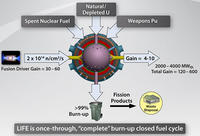
Toxic nuclear waste is stored at sites around the United States, and the need to store nuclear waste is widely considered to be a major disadvantage associated with nuclear energy; physicists have been granted a U.S. for patent for a novel fusion-fission hybrid nuclear reactor which would use nuclear fusion and fission together; the invention could drastically decrease the need for any additional or expanded geological repositories, making nuclear power cleaner and more viable
-
-
Nanotechnology sensor detects mercury in water, fish
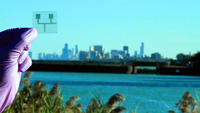
When mercury is dumped into rivers and lakes, the toxic heavy metal can end up in the fish we eat and the water we drink; to help protect consumers from the diseases and conditions associated with mercury, researchers have developed a nanoparticle system that is sensitive enough to detect even the smallest levels of heavy metals in our water and fish
-
-
Many Americans exposed to drinking water-related gastrointestinal illness
More than 100 million people in the United States rely on water piped into homes, schools, and businesses from public water systems that get their water from wells, rather than lakes, rivers, and other above-ground sources; much of that water either is not disinfected at all or is not adequately disinfected to kill disease-causing viruses
-
-
At least 200,000 tons of oil, gas from Deepwater Horizon spill consumed by bacteria

Researchers have found that, over a period of five months following the disastrous 2010 Deepwater Horizon explosion and oil spill, naturally occurring bacteria which exist in the Gulf of Mexico consumed and removed at least 200,000 tons of oil and natural gas that spewed into the deep Gulf from the ruptured well head
-
-
The spring 2010 BP oil disaster could have been prevented: expert
The BP oil disaster in the Gulf of Mexico during the spring of 2010 could have been prevented if the experiences of earlier disasters had been put to use, an expert claims; the U.S. government is now accusing BP of gross negligence and deliberate misconduct, and taking the company to court
-
-
Hurricane Isaac tests Loyola University's emergency response plans
In the days following Hurricane Isaac’s slow march across south Louisiana, Loyola University New Orleans administrators have been reviewing their response with a critical eye to ensure emergency preparations continue to evolve and meet the demands of each situation; beginning Tuesday, 28 August, New Orleans felt the first of Isaac’s high winds and heavy rains – but Loyola University was ready
-
-
There is enough wind power to meet global energy demand
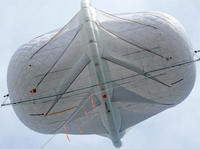
There is enough energy available in winds to meet all of the world’s demand; atmospheric turbines that convert steadier and faster high-altitude winds into energy could generate even more power than ground- and ocean-based units
-
-
Predicting waves’ height, force could double marine-based energy
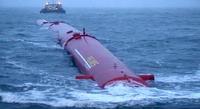
In the search for alternative energy, scientists have focused on the sun and the wind; there is also tremendous potential in harnessing the power of the ocean’s waves, but marine energy presents specific challenges that have made it a less promising resource; one of these challenges is the fact that waves differ in terms of their size and force; forecasting wave height one second in advance optimizes energy collection
-
-
Next generation of advanced climate models needed
From farmers deciding which crops to plant next season, to mayors preparing for possible heat waves, to insurance companies assessing future flood risks, to those responsible for infrastructure protection having to decide how best to use scarce resource to mitigate climate change-induced disasters, an array of stakeholders from the public and private sectors rely on and use climate information; the U.S. National Research Council says he U.S. collection of climate models should advance substantially to deliver more detailed, smaller scale climate projections
-
-
Urchin-loving otters can help fight global warming

A thriving sea otter population that keeps sea urchins in check will in turn allow kelp forests to prosper; the spreading kelp can absorb as much as twelve times the amount of CO2 from the atmosphere than if it were subject to ravenous sea urchins
-
-
Protecting buildings from earthquakes by hiding them

Engineers have come up with an inventive and exciting idea for protecting buildings from earthquakes: hide them (the buildings, that is); the engineers say that placing specialized rubber under the building would diverts certain temblor shock waves, leaving the building virtually untouched by them
-
-
Crack-resistant components for bridges, roof structures, cars
Bridges, roof structures, cars, and more should become increasingly lighter, with the same stability, and thus save energy and materials; the new high-strength steel is superbly suited for the needed lightweight design because it can also withstand extremely heavy stresses; yet these materials also have a disadvantage: with increasing strength, their susceptibility to cold cracking rises when welded; cracks are difficult to predict — until now
-
-
Destroyed coastal habitats produce significant amounts of greenhouse gas

Destruction of coastal habitats may release as much as one billion tons of carbon into the atmosphere each year, ten times higher than previously reported; a new analysis provides the most comprehensive estimate of global carbon emissions from the loss of these coastal habitats to date: 0.15 to 1.2 billion tons; it suggests there is a high value associated with keeping these coastal-marine ecosystems intact as the release of their stored carbon costs roughly $6-$42 billion annually
-
-
Students create low-cost biosensor to detect contaminated water
Diarrheal disease is the second-leading cause of death in children under five years old — killing as many as 1.5 million children worldwide every year; these startling statistics from the World Health Organization (2009) point to the reason why a group of undergraduate students from Arizona State University is working to develop a low-cost biosensor — a simple device that would detect contaminated drinking water
-
-
DHS funds more tests of autonomous power buoy for ocean surveillance
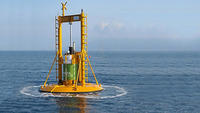
Ocean Power Technologies (OPT) has entered into an agreement with DHS Science & Technology Directorate to perform a new round of in-ocean tests on the company’s Autonomous PowerBuoy to demonstrate its use for ocean surveillance
-
More headlines
The long view
Water Wars: A Historic Agreement Between Mexico and US Is Ramping Up Border Tension
As climate change drives rising temperatures and changes in rainfall, Mexico and the US are in the middle of a conflict over water, putting an additional strain on their relationship. Partly due to constant droughts, Mexico has struggled to maintain its water deliveries for much of the last 25 years, deliveries to which it is obligated by a 1944 water-sharing agreement between the two countries.
Trump Is Fast-Tracking New Coal Mines — Even When They Don’t Make Economic Sense
In Appalachian Tennessee, mines shut down and couldn’t pay their debts. Now a new one is opening under the guise of an “energy emergency.”
Smaller Nuclear Reactors Spark Renewed Interest in a Once-Shunned Energy Source
In the past two years, half the states have taken action to promote nuclear power, from creating nuclear task forces to integrating nuclear into long-term energy plans.
Keeping the Lights on with Nuclear Waste: Radiochemistry Transforms Nuclear Waste into Strategic Materials
How UNLV radiochemistry is pioneering the future of energy in the Southwest by salvaging strategic materials from nuclear dumps –and making it safe.
Model Predicts Long-Term Effects of Nuclear Waste on Underground Disposal Systems
The simulations matched results from an underground lab experiment in Switzerland, suggesting modeling could be used to validate the safety of nuclear disposal sites.
